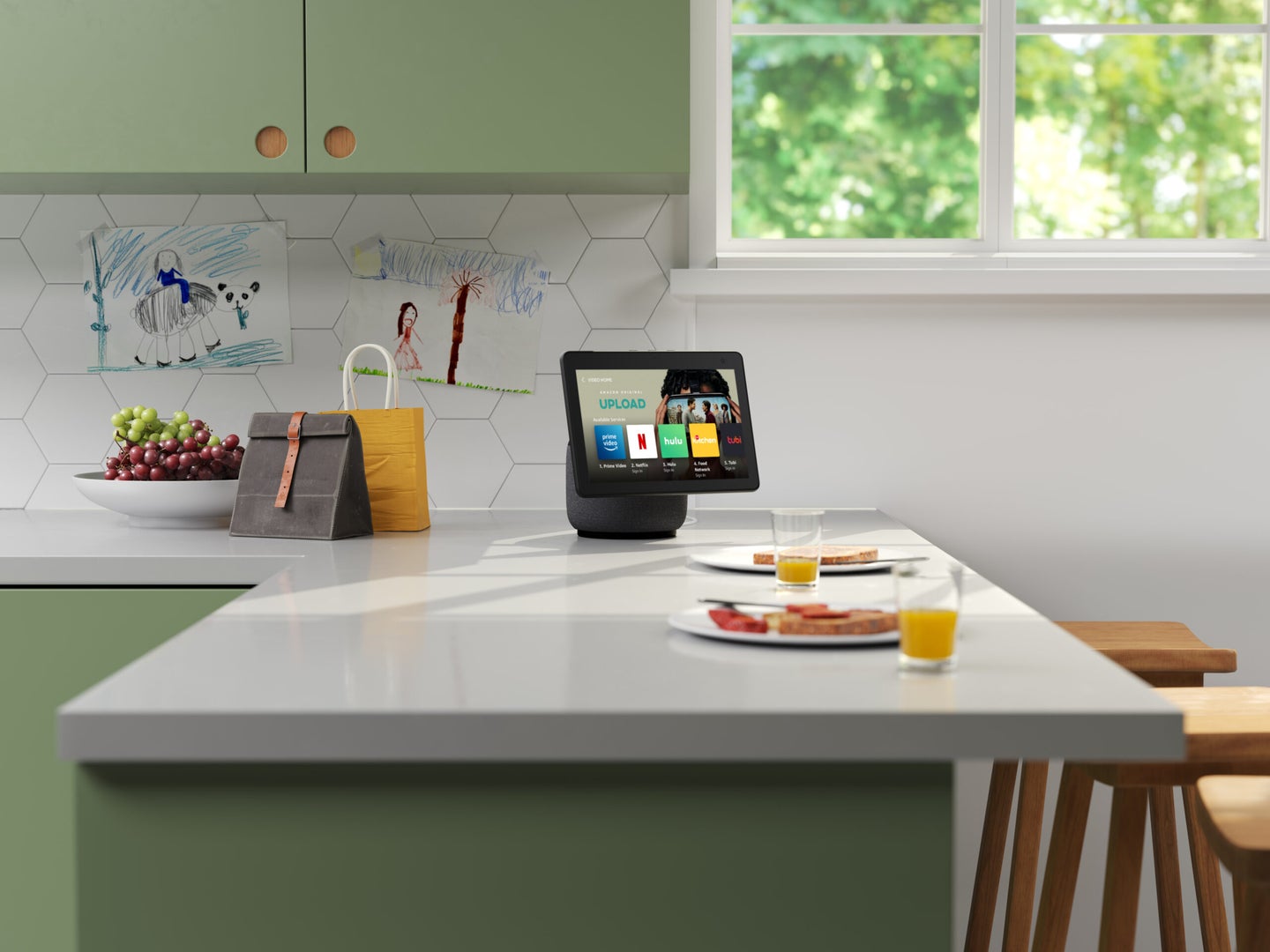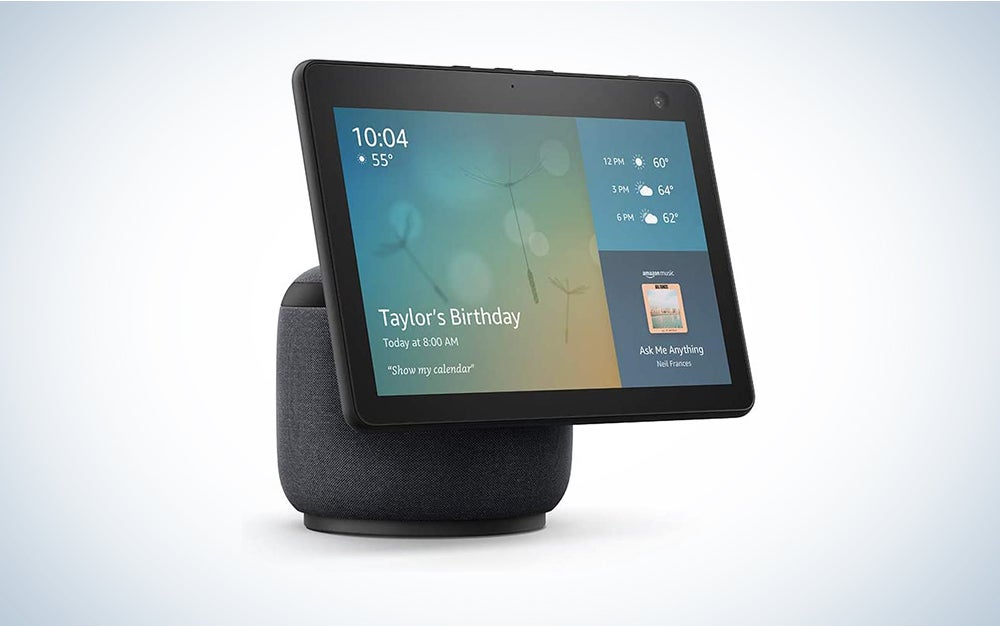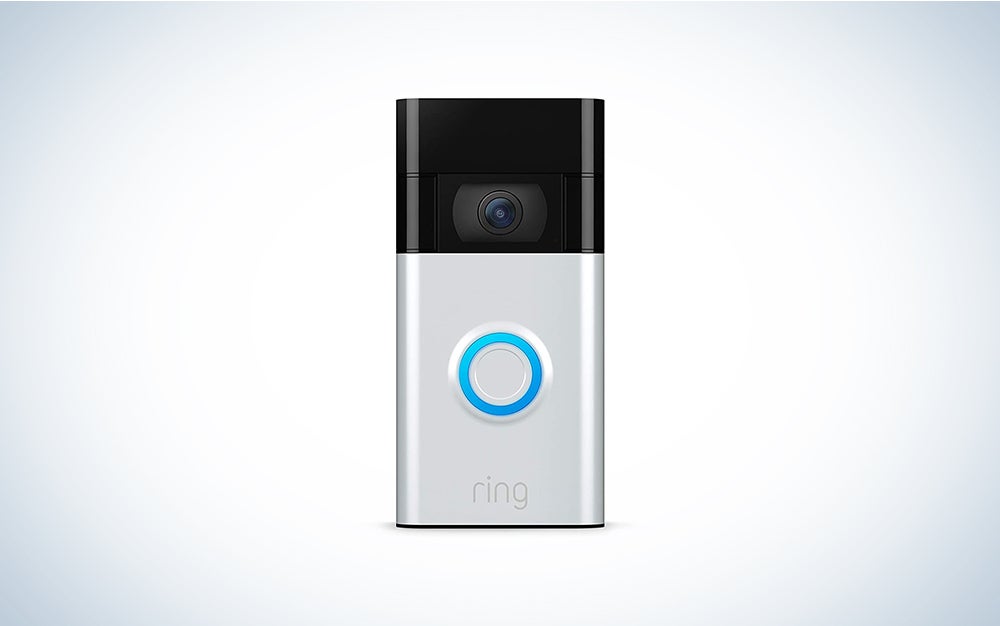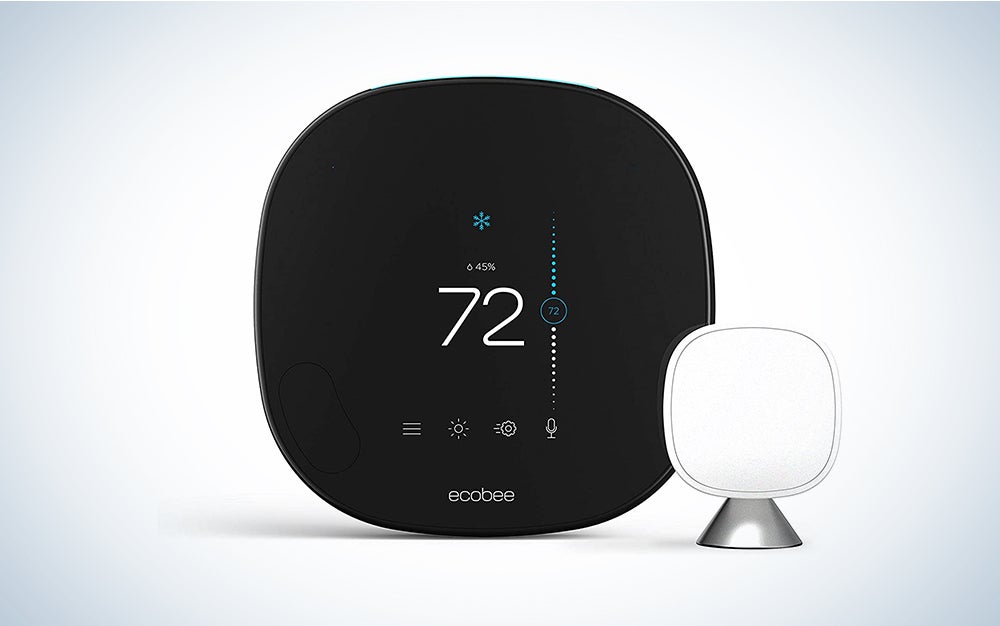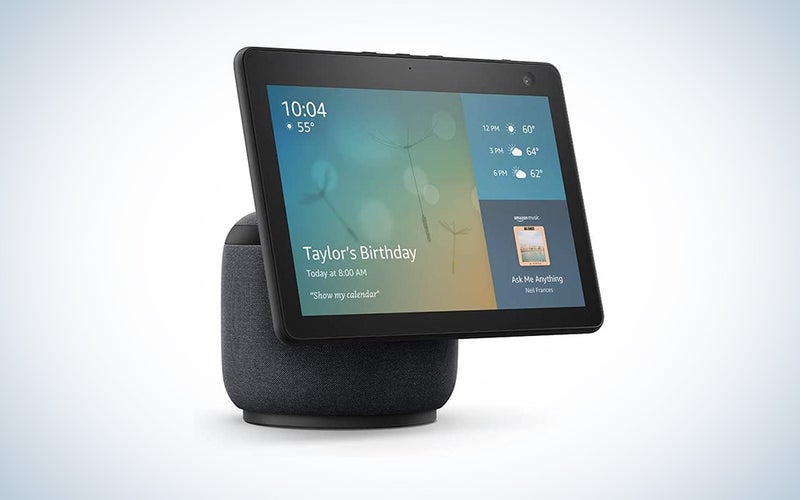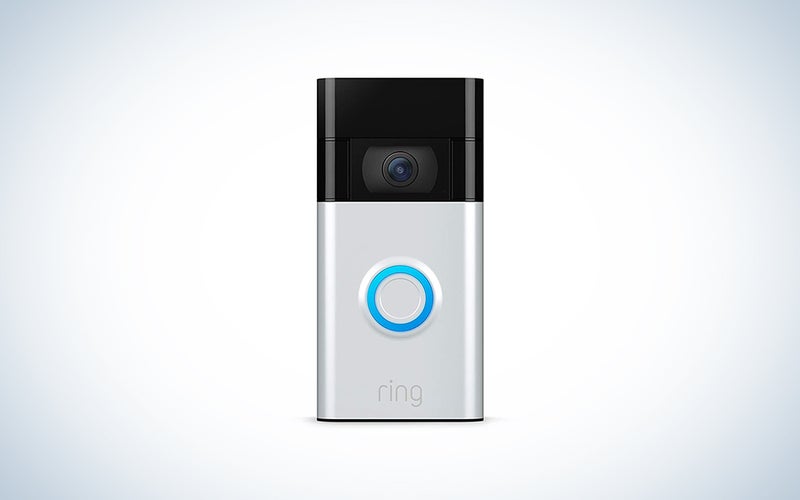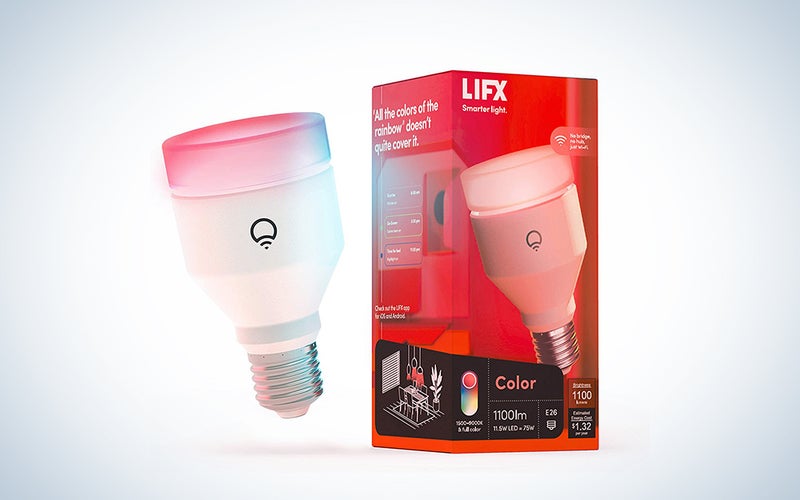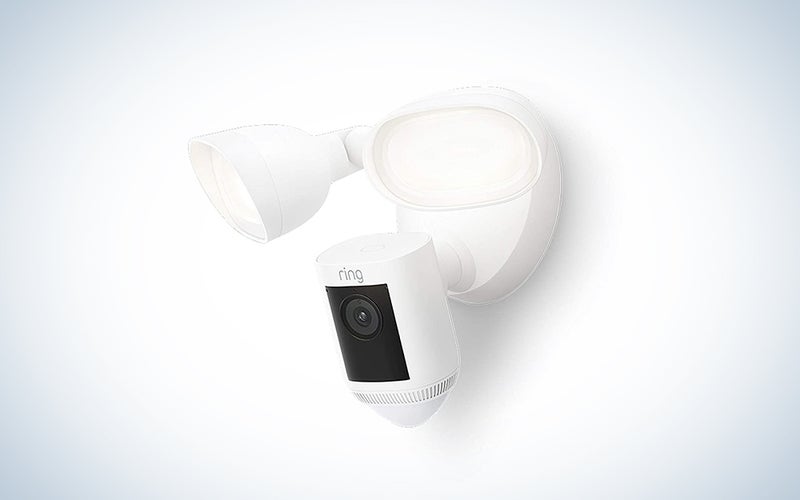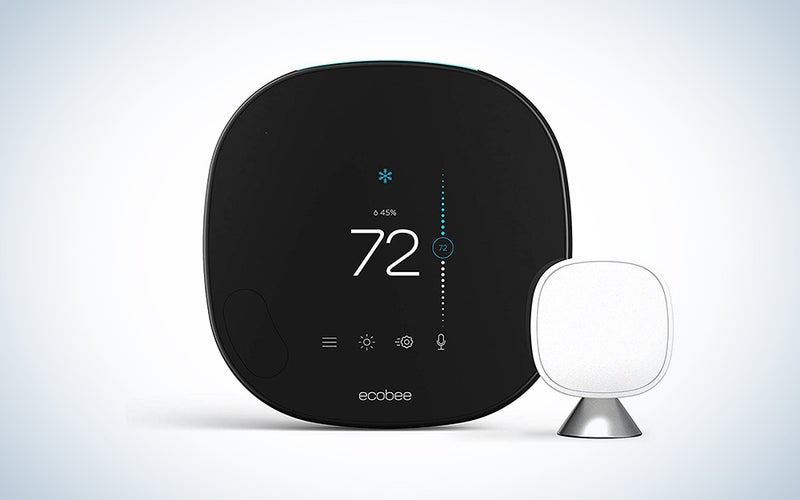We may earn revenue from the products available on this page and participate in affiliate programs. Learn more ›
It’s easy to accidentally end up with a smart home. You pick up random pieces of connected gear over time. You grab a smart speaker when they’re super cheap on Black Friday. Then someone gives you a random connected light bulb as a gift. But if you want everything to work nicely together, you need a strategy. Building the Alexa smart home requires a little planning to make sure everything works nicely together. Otherwise, you may spend hours googling for roundabout solutions. Luckily, this kit works well together, taking orders from Alexa with minimal fuss.
- Best hub: Echo Show 10
- Best smart doorbell: Ring Video Doorbell 4
- Best connected lighting: Lifx A19 bulb
- Best floodlight camera: Ring Floodlight Cam Wired Pro
- Best smart thermostat: ecobee SmartThermostat
Getting started with Alexa’s smart home skills
Buying into the Alexa echo system is easy. In fact, with Amazon devices reaching such absurdly low prices during sales like Prime Day and Black Friday, many people get their first Alexa simply by chance.
But, the Bezos empire and the Alexa arm reach far and wide. When it comes to total compatible smart home devices, Alexa beats out both Google Assistant and Apple’s HomeKit with ease. Simply put, you can find Alexa in almost everything. Need an Alexa-powered microwave? Amazon has one. Seriously.
Alexa is a learning computer
Amazon’s Alexa smart home platform has a few other advantages beyond compatibility. Alexa can learn new “skills,” that allow you to add new functionality to your smart home setup. Add the Domino’s pizza skill and those irresponsible delivery orders are just one simple Alexa request away.
The best Alexa smart home, however, involves some planning. Skills and third-party platforms like IFTTT (short for “if this, then that) can kludge different devices into the mix. But, you’ll have a much better experience if you start with products that work together right out of the box.
Things to do before you set up your Alexa smart home
Ideally, we could just plug all this stuff in and expect it to start responding to our commands like Tony Stark’s omnipresent house computer, JARVIS in The Avengers. What they don’t show, however, is Tony Stark making sure his house has sufficient wireless coverage and that his Wi-Fi supports the correct part of the spectrum so everything plays nicely together.
Because you’re going to be expecting everything to talk to each other, you want to make sure you have sufficient wireless coverage around your house. That smart bulb on the porch far from the router will be really annoying if it has a spotty grasp on your network. If your coverage is lacking, you could consider switching to a mesh network. Or, you can simply add an extender to your setup so the waves can reach your fancy new devices.
If you’re trying to hook up some older devices, they may specifically require a 2.4 Ghz connection instead of the 5 Ghz band. Most modern routers will support both. But, be sure to stay consistent when connecting your devices or it can cause problems.
Consider adjusting your services
The world of corporate competition can make platform support complicated. Every week you’ll still see tech blog headlines along the lines of “YouTube is finally available on Amazon’s Fire TV devices.” It’s frustrating. But, it helps tech executives pay for their trips to space, so who are we to complain? If you’re already fully ensconced in Amazon services like Prime, Amazon Music Unlimited, and Audible, then you’ll get the most out of Alexa-based devices because they have native support.
If you’re unwilling to change your ragtag group of services, Alexa is still a fairly good option. The platform has been around longer than its competition. That has given it more time to add support for different services. Still, this whole process goes a lot easier if you’re willing to sell your digital soul to Amazon wholesale.
The smartphone disadvantage
Amazon has peppered most of the world with well over 100 million Alexa-enabled devices. That number comes all the way back from 2019. Think about how many $20 Echo Dots alone have shipped since then.
While that’s a big number, it still can’t compete with Apple and Google who have built their smart assistants directly into iOS and Android smartphones. There are a lot of those out in the world. If you want the tightest integration with your phone, then Google Assistant or Apple’s HomeKit might make a better choice for you to start.
Build a command center
Because Alexa doesn’t have the same tight phone integration as Google or Apple, you’ll want to pay extra close attention to the choices you make when buying a smart speaker or smart display. That’s how you’ll control everything.
Amazon was actually first to the smart speaker market with its first Echo device all the way back in 2014. Now, the company offers a full range of Echo devices. All of them will let you bark orders to the rest of your smart home devices.
Sprinkling Echo speakers all over your home makes it easier to control your home. It also enables some other handy features like a built-in intercom system that lets you make PA announcements throughout the house. You can feel like a baseball announcer and annoy your entire family. Plus, the speakers link together so you can have whole-home audio. You can bump Lil Nas X simultaneously in every room of your house.
While there are plenty of third-party, Alexa-enabled speakers out there, I recommend just staying in the Amazon family to maximize compatibility.
Best hub: Echo Show 10
Amazon
You can control your smart home devices with a simple $50 Echo Dot. But upgrading to the $250 Echo Show 10 can do so much more. It has a huge 10.1-inch HD touchscreen display you can use to watch content while doing the dishes or look through your connected doorbell to see who’s there. It has a built-in camera and the whole thing can rotate to act as an internal security camera you can access remotely. The base contains a full-featured smart speaker with plenty of power to loop into your whole-home audio system. It also acts as a Zigbee hub so it allows you to rope in third-party smart home devices with ease.
This is going to be the command center for your smart home. It’s worth spending more money to get the best.
The night’s watch
Amazon has a particular interest in seeing who’s at your door. That’s because it’s often an Amazon delivery person. Back in 2018, Amazon went out and purchased Ring, one of the biggest connected doorbell and security companies on the market at the time.
Whichever connected doorbell you pick, you should expect to spend some time dialing it in before you get the best performance out of it. A solid video doorbell should include basic functionality, like live view and video recording. But, modern models also include features like AI-powered facial recognition and ever-improving skills when it comes to ignoring a random raccoon as it ambles past your house.
You’ll also likely want a two-way speaker system. That way, you can interact with people at your door without having to open it.
Be prepared to pay a subscription fee to go along with your camera. You’ll typically get basic functionality right out of the box, but you’ll want to factor in the cost of the subscription so you can unlock increased video storage and other advanced features. Ring offers two plans. They include a $30 annual sub for the Basic package, or a $100 annual sub for the Plus option.
Best smart doorbell: Ring Video Doorbell 4
Ring
This $199 video doorbell hits the sweet spot when it comes to easy installation and a full set of features. It’s battery-powered, which means you don’t have to hard-wire it into your house. That wiring process can be extremely annoying if you don’t already have the necessary wires to hook it up. As long as you remember to charge it every couple of months, it can provide a clear 1080p image of whoever’s at your door. You’ll get a mobile notification whenever someone’s at the door and it provides improved motion tracking from the previous version so you’ll get fewer false alarms.
Brighten up your life
Smart light bulbs are typically the first connected accessory many people buy when they’re trying to automate their home. There are tons of options on the market at the moment, so selecting your ideal model really depends on your taste. Some offer simple illumination that you can turn on and off with a command. Some offer dimming options for dialing in the right mood. Others can reproduce a ton of different colors from typical white to Barney purple.
The trickiest part of getting a bulb that works with your system is often figuring out whether or not the bulbs need a hub in order to work. For instance, Amazon’s own Ring light bulbs are affordable and excellent. However, if you don’t have an Echo Show 10 (listed above) or a 4th generation Echo speaker, you’ll need a device called the Ring Hub to make it work. Awkward.
Best connected lighting: Lifx A19 bulb
Lifx
If you want endless lighting options without the need for a bridge, then this is a great choice. It connects directly to your Alexa smart home without extra equipment. It can pump out up to 1,100 lumens. That’s enough to light up even a large room all on its own. Plus, it can produce literally billions of different colors. You can set any mood you want from a romantic evening to a semi-stressful night at the creepy circus. It’s not exactly cheap, but it has a long life and you can often save money if you buy multi-packs.
Extend your outdoor security system
Sometimes you want more security coverage than you can get from a simple video doorbell. Outdoor security lights often include motion-detection technology that will flick on the floods when it senses something scrounging around in your yard.
An extra built-in camera can also give you a wider view of the environment around your house. Just be sure to pick something with smart motion detection that can at least sometimes tell the difference between a person approaching your door and a squirrel going wild trying to break into your bird feeder for 45 minutes.
Best floodlight camera: Ring Floodlight Cam Wired Pro
Ring
Amazon built a custom radar sensor into its flagship exterior floodlight camera. That allows it to drastically cut down on the number of false activations it will experience. It includes a pair of bright floodlights to throw illumination across a medium-sized yard. The built-in camera captures an HD picture of everything happening in front of it. You’ll have to hard-wire it into your house, but it easily fits in any socket that already has an exterior light.
If you don’t need the latest and greatest, you can save some money by skipping the extra features and radar sensor and go for the still-excellent Ring Floodlight Cam Wired Plus.
Keep cool (or warm. It’s up to you, really.)
You typically don’t think about your thermostat unless you’re uncomfortable. With a smart thermostat, hopefully, you’ll never get to that point. That electronic panel on your wall can just be like a swanky decoration with some numbers on it.
Hooking up a smart thermostat isn’t always the simplest process. Your house will need a C wire and the correct hookups to make it work with your HVAC system. If you don’t have that, or you’re unsure, you may want to have a professional do the hookup for you.
Unlike Google, Amazon doesn’t own a smart thermostat company, so you’ll have to go to a third-party option in this case.
Best smart thermostat: ecobee SmartThermostat
Ecobee
With its slick design and a whole host of smart features, the ecobee smart thermostat is worthy of a place on your wall. It comes with a separate temperature sensor, so you can put it in the most important room of the house to get the feeling just right. If you spend the most time in the living room, put it there and it’ll make sure you stay comfy on the couch. If you want to expand your smart home even more down the road, it can control devices like humidifiers and dehumidifiers.
FAQs
Q: What is the difference between Alexa and Echo
This can get confusing, but it’s pretty simple once you wrap your head around it. Alexa refers to Amazon’s smart assistant. It’s the voice you talk to who can control your smart home, play music, and look up answers to your kid’s homework questions. Echo refers to Amazon’s line of smart speakers and displays. It applies to the actual hardware. So, if you wanted to build an Amazon smart home, you’d buy Echo smart speakers and displays, which support the Alexa digital assistant.
Q: Is there a monthly fee for Alexa?
The short answer is no. If you have a compatible device or the Amazon app, you can talk to Alexa about your hopes and dreams all night long for free. There are, however, some services that work with Alexa that require payment. For instance, if you want the advanced features from your Ring security system, you’ll have to pay for a subscription. The same goes for skills like ordering a pizza with a voice command.
Q: How do I set up Alexa?
Amazon has done a solid job automating a lot of the setup, so there really isn’t all that much to do during the process. You’ll want to make sure that you have an active Amazon account as well as the Amazon app for your smart device before you get started, though. From there, it’s extremely simple.
A final word about building the best Alexa smart home
As you can see, you have a lot of options. The best Alexa smart home will meet the needs you have now and provide a solid platform onto which you can grow later. Once you’ve bought into the Alexa platform, stick with it. Compatibility and ease of setup can sometimes eclipse a difference in features.
